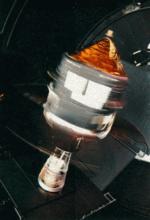

|
Astronomers in Finland and Germany have measured how much light is generated by all the stars near the Sun. Stars generate light by nuclear reactions in their cores, but the amount of light they produce is very different for stars of different types. Broadly speaking, stars fall into two categories from the point of view of lighting up the universe. Some stars are highly luminous -- they can be seen at great distances from the Earth -- and produce a lot of light. But such stars are rare. Most stars are actually very dim -- quite a lot dimmer than the Sun, and produce very little light in interstellar space. Chris Flynn, Johan Holmberg and Laura Portinari of Tuorla Observatory and Burkhard Fuchs and Hartmut Jahreiss of the Astronomisches Rechen-Institut in Heidelberg have combined forces to work out how much light is produced by all the stars in space around the Sun, and which stellar types do most of the effort. The team put together a 'luminosity budget' for nearby stellar space. They found that about half the light near the Sun is generated by giant stars, while the other half comes from so-called 'turnoff' stars, which are stars coming to the end of their supply of Hydrogen fuel, and will eventually become giant stars themselves. The amount of light emitted can be compared to the amount of mass contained in the same stars. Armed with the ratio of the two, astronomers can look to distant galaxies, where the individual stars cannot be resolved, and make estimates of the amount of matter galaxies contain in stars from the amount of light they emit. One of the big surprises of studies of this latter type, is that stars make up only a very small part of the mass of galaxies -- the so-called 'dark matter' problem, in which galaxies are dominated by a kind of matter which emits no (or very little) light, and quite unlike their stellar content. The team was also able to estimate the total light emitted by the Milky Way as a galaxy -- about 40 billion times the light emitted by the Sun, give or take a few billion. The study has been accepted for publication in the Monthly Notices of the Royal Astronomical Society. Preprint is available here |

The key to the study was that accurate distances to nearby stars had been measured by the European Space Agency's Hipparcos satellite. Prior to the launch in 1989 of this highly successful mission, accurate distances were known for much too few stars to be able to determine accurately how much light each star contributes locally to interstellar space. Hipparcos measured accurate distances to tens of thousands of stars and the European Space Agency is now preparing to follow up Hipparcos with GAIA, with the aim of mapping out how stars are distributed in the Milky Way up to thousands of light years away. |